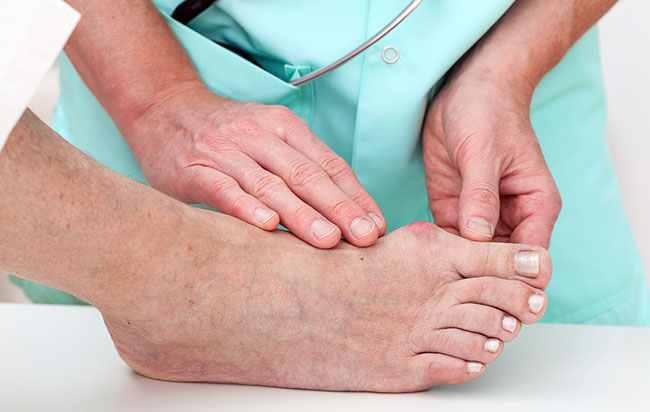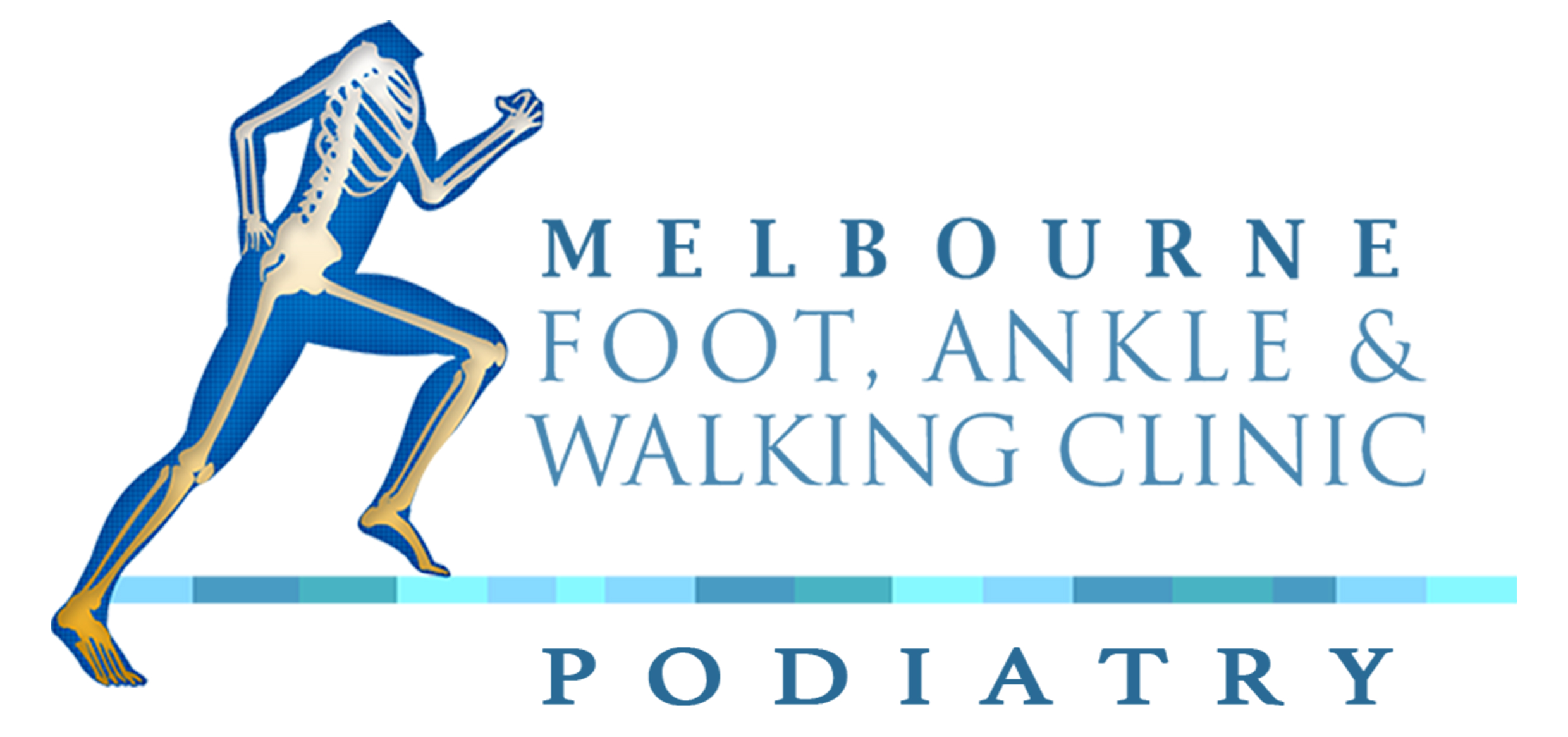A bunion (hallux valgus) is a bony bump that develops at the main joint between the big toe and the foot and pulls the big toe to incline towards the second toe instead of straight ahead. They also may develop on the fifth (little toe).They begin as small lumps and increase over time which can make walking or daily activities difficult and/or painful. Bunions develop because of a structural problem in the bone of the foot and toes, usually the metatarsophalangeal joint. They mostly occur in adults but can be found in children and adolescents. A bunion is one of the most common toe problems and affects one in three people over the age of 65 years.

Bunions Causes
Foot stress or abnormal biomechanics of the foot – people with fat feet or low arch usually tend to over pronate (roll too far over with each step) which can place excessive pressure around the base of the big toe.
Arthritis – such as rheumatoid arthritis
Foot injuries
Hereditary – bunions often run on the family so sometimes it is down to genetics so there is nothing you can do to prevent them. The person may inherit a short metatarsal or the distal joint of the first metatarsal may be more convex and rounded increasing the risk of developing a bunion.
Hypermobility or having a big toe that moves more than usual
Feet that have not developed properly before birth
Some people believe that ill-fitting or high heeled shoes can also cause bunions, but they only aggravate already existing bunions or cause bunions to develop in people with a genetic risk of the condition. They do not cause the bunion directly.
Bunions Symptoms
The most obvious symptom is the bump that forms at the base of the big toe. Other symptoms may include numbness, swelling at the joint where the lump has formed, pain and soreness, redness, a burning sensation, increased skin thickness or hardened skin under the base of the affected toe, corns or calluses and movement restrictions. Some people may have bunions but may never have any symptoms.
Types of bunions
Many bunions are a combination of both types.
Positional bunions
As new bone grows, the joint enlarges. This stretches the outer covering and the force created by the stretching pushes the big toe towards the smaller ones. Eventually the inside tendons tighten, pulling the big toe further out of alignment.
Structural Bunions
When the angle between the bone of the first and second toes is greater than normal, the big toe slants towards the smaller ones. In severe cases, this may also cause the second and third toes to buckle.
Prevention
Avoid wearing high heeled shoes and shoes that cause cramping, squeezing, pressing or irritation to the toes and feet. Always look for a shoe with a wide toe box.
Bunions Treatment
To reduce the chance of damage to the joint regular checks and x rays are advised.
In some cases some type of treatment is needed. Early treatments are aimed to ease the pain, but will not fully reverse the deformity itself. These include:
- A change in foot wear – the correct fitting and appropriate shoe is very important. No heel, pointed toes or ill-fitting shoes. A wide toe box is important.
- Orthotic devices – custom orthotics to improve the posture of the foot and decrease the ground reaction forces that cause the condition.
- Exercises and stretches
- Strengthening specific muscles in the foot and lower leg
- Icing – can help with inflammation and pain
- Padding – pads placed over the bunion can minimise the pain
- Activity modifications- avoiding any activity that causes bunion pain, including standing for long periods of time
When is surgery needed?
If all the non-surgical treatments do not relive the bunion pain and when the bunion interferes with daily activities, then surgery may the next option.
Determining which surgery will provide the best results requires the consideration of the factors such as severity of the condition, underlying cause, and any past procedures.
Bunion Osteotomy – the most common of the procedures as it is less invasive as the surgeon will access the joint and realign it through small incisions. The newly aligned joint will be held in place with pins, plates, or screws. The ligaments and tendons around the joint may also need to be corrected to help the joint keep its new position.
Bunion Arthrodesis- Bunions that are caused by arthritis or had a previous failed bunion surgery may benefit from this procedure. It replaces the damaged joint with components such as plates, screws, or wires.
Bunion Exostectomy – This involves removing the bump but not make any changes to the joint alignment. For this reason, this alone is rarely used as it often fails to address the underlying cause of the bunion. It would likely be used in conjunction with other methods such as osteotomy and soft tissue correction.
